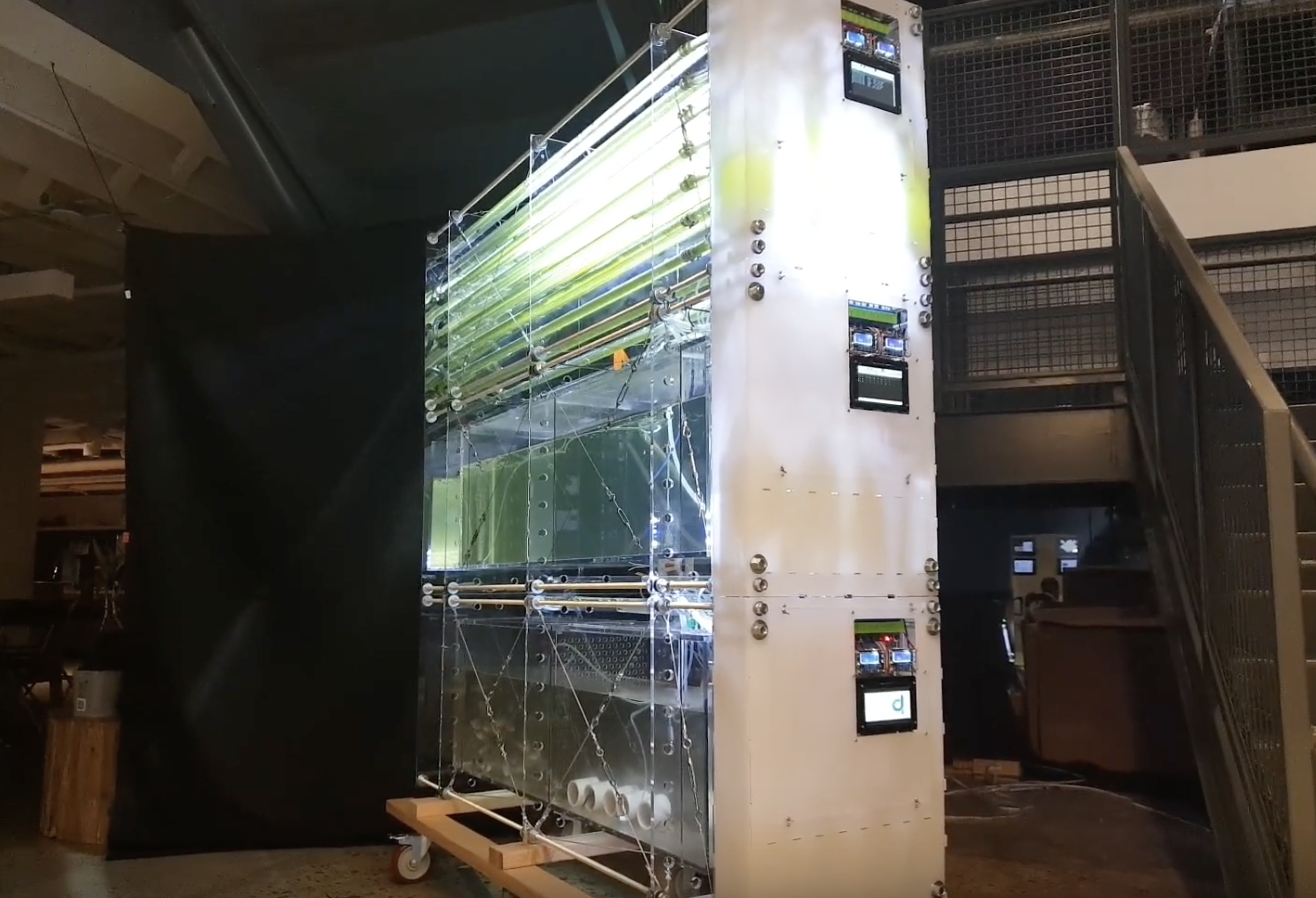
Globally, the U.S. gets over one half of all its seafood from aquaculture. The process is meant to give some relief to overfished ocean stocks and create a more reliable seafood source, but it doesn’t always work out that way.
“The problem is that the production method is still connected to the oceans,” said Paul Schmitzberger, CEO and co-founder of BluePlanet Ecosystems, over the phone. He explained that farmed fish are often fed small fish caught from oceans, and the smaller fish might contain mercury or microplastics. And even when fish farms use soy for their animal feed, it comes with an environmental cost all its own.
But what if the aquaculture farms could produce their own food and repurpose their own waste, just like in natural ecosystems? Schmitzberger and his team at BluePlanet Ecosystems, which was incorporated in 2018, set out to do just that.
The Austrian company’s LARA (Land-based Automated Recirculating Aquaculture) is a completely turnkey system which consists of three horizontal units stacked on top of each other. The top unit uses energy from the sun to grow microalgae, the “power source” for the entire system. The microalgae is then pumped down to the second unit where it feeds tiny zooplankton. Finally, the zooplankton is moved down to the bottom unit, where it’s eaten by fish and crustaceans. Any waste from the sea life is recirculated up to the top to be used as food for the algae.
In short, it’s a completely contained system that grows seafood without the need to input any food or extract any waste.
When I first heard about the LARA, I had one question: Why had nobody else done this before? According to Schmitzberger, the answer is because it’s extremely difficult to manage. Without constant monitoring, the delicate balance of algae/zooplankton/seafood can get out of whack and ruin the whole system.
However, BluePlanet Ecosystems believes they can do what others couldn’t by adding something that nature doesn’t have: high tech. The startup uses a combination of water sensors, computer vision and machine learning to constantly monitor and optimize the dynamics of the tanks. “We’re monitoring every organism in the system,” said Schmitzberger.
For example, if the cameras notice there are too many plankton in the middle tank, the system will automatically activate a water pump to flush a portion of those plankton out to be eaten. If the software recognizes that a fish is sick, it can alert managers to look for a root cause before the rest of the population falls ill.
The LARAs can fit in 40-ton shipping containers and contain 100 cubic meters of water. They’re modular, so companies can connect multiple units together to be managed under BluePlanet’s software. The units will cost about $50,000 each plus a recurring $2,500 fee for every ton of seafood produced through the system, which Schmitzberger estimates companies should be able to recoup in four to five years. He said they hope to start constructing full-size prototypes over the next six months, with plans to deliver them at the beginning of 2021.
BluePlanet Ecosystems just signed a letter of intent with Singapore largest caterer, sats, which processes 100 tons of seafood every month. They have $250,000 in funding from IndieBio and are currently raising a seed round for $2.8 million.
Several companies are already putting parts of the LARA system in practice. TimberFish has a no-waste aquaculture system based upon brewery waste and woodchips. Aquabyte uses machine learning and computer vision to optimize fish maintenance in seafood farm pens. However, BluePlanet combines both of those value-adds into one — and promises to do it without any necessary inputs.
As of yet, LARAs are untested and expensive. But if they work as promised, we might see our farmed seafood sources become gradually more and more sustainable.


Leave a Reply